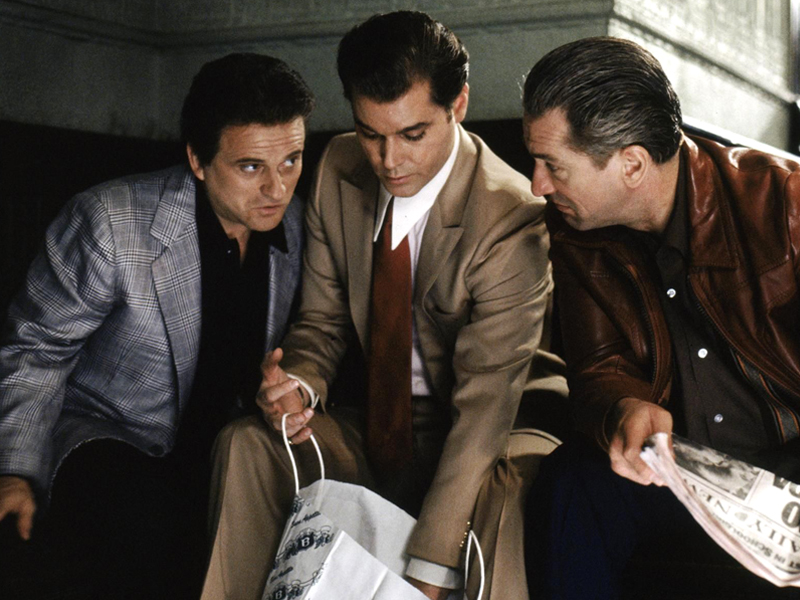
The true story of Henry Hill, a half-Irish, half-Sicilian Brooklyn kid who is adopted by neighbourhood gangsters at an early age and climbs the ranks of a Mafia family under the guidance of Jimmy Conway.
“As far back as I can remember, I always wanted to be a gangster.”
Henry Hill
“There’s no sense in making another ganster picture, unless it is as close as possible to a certain kind of reality, to the spirit of documentary.
The real trick, of course, was the voice-over. I showed Nick [Pileggi, co-screenwriter and author of the source novel] the opening of Jules et Jim to explain what I was aiming for. So he understood when I started pulling lines out from here and there and mixing voice-over and using stills – really all the basic tricks of the New Wave from around 1961. What I loved about those Truffaut and Godard techniques from the early sixties was that the narrative was not that important. You could stop the picture and say: ‘Listen, this is what we’re going to do right now – oh, by the way, that guy got killed – and we’ll see you later.’
I wanted a very fluid style, as usual, but I also wanted it to be as if I had been doing an Al and David Maysles cinéma-vérité documentary on these guys for twenty-five years with the ability to walk in and out of rooms with cameras. There had to be even more movement than I normally have and a frenetic quality of getting as much over to the audience as possible, almost overwhelming them with images and information, so that you could see the film a couple of times and still get more out of it.
I like doing that kind of thing [the 2’59” Copacabana steadicam shot]. I’im torn between admiring things done in one shot, like Max Ophuls and Renoir or Mizoguchi on the one hand, and the cutting of Eisenstein or Hitchcock on the other, which I probably love even more. But here there was a reson to do it all in one shot. (...) It had to be done in one sweeping shot, because it’s his seduction of the girl and it’s also the lifestyle seducing him.
It’s interesting that one of the preview audiences’ favourite scenes was a very long sequence I’d developed with the actors. It’s where Joe Pesci is telling a story and Ray is responding to him – the ‘what's so funny about me’ scene. This was all improvised; I kept adding set-ups to let the whole moment play out. I feel that if what the actors are doing is truthful and enjoyable, the audience will accept longer scenes and a slower rhythm.”
Martin Scorsese1
- 1Martin Scorsese, David Thompson & Ian Christie (eds.), Scorsese on Scorsese (Updated Edition), (London: Faber and Faber, 1996).